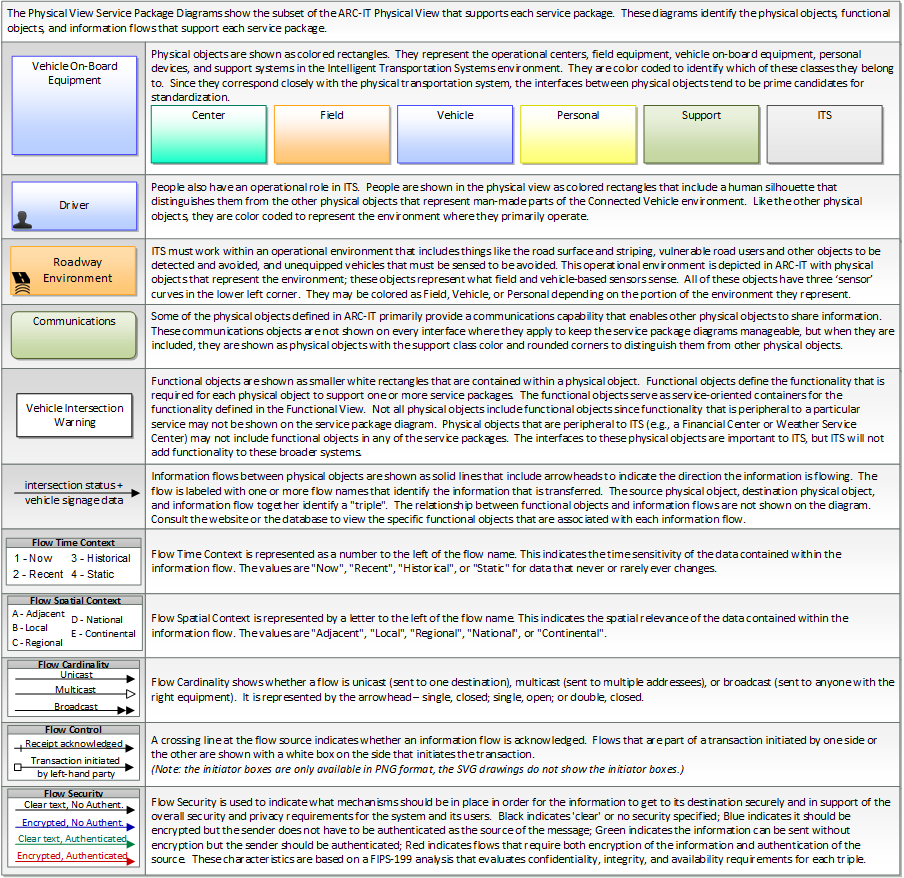TM04: Fully Traffic Responsive
The fully traffic responsive implementation offered in TM03 is extended with Connected Vehicle Roadside Equipment installed at the intersection that supports real-time communications between the intersection and approaching vehicles. Detailed status is collected from approaching vehicles and real-time intersection status is provided so that approaching and queued vehicles can optimize their intersection use. In this more advanced implementation, signal timing is based on data collected from approaching vehicles and/or traditional infrastructure-based detectors.
Relevant Regions: Australia, Canada, European Union, and United States
- Enterprise
- Functional
- Physical
- Goals and Objectives
- Needs and Requirements
- Sources
- Security
- Standards
- System Requirements
Enterprise
Development Stage Roles and Relationships
Installation Stage Roles and Relationships
Operations Stage Roles and Relationships
(hide)
| Source | Destination | Role/Relationship |
|---|
Maintenance Stage Roles and Relationships
Functional
This service package includes the following Functional View PSpecs:
| Physical Object | Functional Object | PSpec Number | PSpec Name |
|---|
Physical
The physical diagram can be viewed in SVG or PNG format and the current format is SVG.Physical diagrams have not been developed for this application yet.

Includes Physical Objects:
| Physical Object | Class | Description |
|---|
Includes Functional Objects:
| Functional Object | Description | Physical Object |
|---|
Includes Information Flows:
| Information Flow | Description |
|---|
Goals and Objectives
Associated Planning Factors and Goals
| Planning Factor | Goal |
|---|---|
| A. Support the economic vitality of the metropolitan area, especially by enabling global competitiveness, productivity, and efficiency; | Improve freight network |
| D. Increase the accessibility and mobility of people and for freight; | Reduce congestion |
| E. Protect and enhance the environment, promote energy conservation, improve the quality of life, and promote consistency between transportation improvements and State and local planned growth and economic development patterns; | Protect/Enhance the Environment |
| G. Promote efficient system management and operation; | Improve efficiency |
| I. Improve the resiliency and reliability of the transportation system and reduce or mitigate stormwater impacts of surface transportation; | Improve resiliency and reliability |
Associated Objective Categories 
Associated Objectives and Performance Measures 

Needs and Requirements
| Need | Functional Object | Requirement | ||
|---|---|---|---|---|
Related Sources
- None
Security
In order to participate in this service package, each physical object should meet or exceed the following security levels.
| Physical Object Security | ||||
|---|---|---|---|---|
| Physical Object | Confidentiality | Integrity | Availability | Security Class |
| Security levels have not been defined yet. | ||||
In order to participate in this service package, each information flow triple should meet or exceed the following security levels.
| Information Flow Security | |||||
|---|---|---|---|---|---|
| Source | Destination | Information Flow | Confidentiality | Integrity | Availability |
| Basis | Basis | Basis | |||
| Security levels have not been defined yet. | |||||
Standards
Currently, there are no standards associated with the physical objects in this service package. For standards related to interfaces, see the specific information flow triple pages.
Needs and Requirements
| Need | Functional Object | Requirement | ||
|---|---|---|---|---|
System Requirements
| No System Requirements |